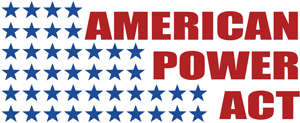Fresh off of a financial crisis that risked throwing the US into a depression, my hope was that lessons would be learned. Nothing dramatic, perhaps, but at least the basics on incentive structures in financial deals. Like when you let people bet only with somebody else's money, they are far less careful about what they bet on, and how much they put at risk. And the related issue that if you let investors take their own cash out of the game too quickly, the probability of project failure rises sharply. And finally, if the one left fronting (or guaranteeing) all the cash is you, it is time to worry.
Worrying does not seem to be the strong suit of Senators Kerry and Lieberman (K-L) in their American Power Act (APA) proposal issued in May. They have joined a line of political backers for nuclear power who want to give reactors a pass on the market test, adding to the already rich pot of subsidies that nuclear investors would receive.
 I've just completed a detailed analysis of three of the nuclear tax subsidies within the APA for Friends of the Earth: 5 year accelerated depreciation for nuclear investments; a 10% investment tax credit; and an expansion of the nuclear production tax credit. The full memo is available here; a summary by Friends of the Earth is here.
I've just completed a detailed analysis of three of the nuclear tax subsidies within the APA for Friends of the Earth: 5 year accelerated depreciation for nuclear investments; a 10% investment tax credit; and an expansion of the nuclear production tax credit. The full memo is available here; a summary by Friends of the Earth is here.
Keep in mind that the scope of this analysis was quite limited: many other subsidies to nuclear in APA were not quantified; and the large set of existing subsidies to nukes also ignored. But even so, it appears that through the 5 year depreciation and ITC alone, K-L have kicked in the final 20 percent to the "policy-enhanced investing" that the industry seems increasingly to be relying on.
This "20 percent" was the equity required to be at risk for nuclear projects that were getting the remaining 80 percent guaranteed by the feds under the Title 17 advanced energy loan program. While the investors woudl still need to put in the equity at the beginning, the generous tax breaks effectively allow them to take most of it off the table within three years of reactor operation; and the full capital at risk (or nearly all in our low estimate using more favorable capital cost assumptions) within five. After that, gentle taxpayer, it is you and I who bear the financial risk from projects going bad. And no, we don't get to share in the upside if the project turns out well.
The main findings from the memo include:
- K-L subsidies worth billions per reactor. The new subsidies will be worth between $1.3 and nearly $3.0 billion per new reactor on a net present value basis. This is equivalent to between 15 and 20 percent of the total all-in cost of the reactors, as projected by industry.
- New subsidies will undermine equity requirements of the nuclear loan guarantee program. Despite significant structural weaknesses in DOE's Title 17 loan guarantee program, the rules at least required investors to hold a 20 percent equity stake in the new project. A key goal of this requirement is to ensure investors have a strong interest in the long-term success of the venture and feel substantial pain from its failure. However, the K-L bill would in effect allow investors to recover funds equal to this equity share within the first few years of plant operation. Financial risks from project failure would then rest almost entirely with taxpayers.
- New nuclear subsidies on offer under K-L are worth 15 to more than 50 percent of the expected market value of power the plants will produce. This is in addition to the many other subsidies the nuclear projects would already receive.
- K-L “progress payments” allow ITCs to be claimed before reactor opens, greatly increasing taxpayer risks. Bill language to recapture these credits is unlikely to be effective in a situation where a reactor project goes into bankruptcy.
- Aggregate tax subsidies to new reactors could reach tens of billions of dollars (net present value) from K-L's two main tax breaks alone. The national cost of K-L's tax provisions can be benchmarked by evaluating two build-out scenarios: 6 reactors, matching the number likely to be supported under K-L's expanded nuclear loan guarantee pool; and 22 reactors, matching the number going through NRC licensing as of May 2010. As not all reactors will be the same type, the calculations assume half are AP1000s and half Areva EPRs. Under a 6 reactor scenario, K-L will add $9.7 to $15.6 billion in tax subsidies to nuclear power on a net present value basis. Under a 22 reactor scenario, the net present value of subsidies on offer just through 5-year depreciation and ITCs reaches $35.7-$57.3 billion. Unlike the PTC, neither of these other subsidies have any national caps, so the taxpayer cost scales linearly with reactor count.
Check out these links for more on subsidies in APA; and for an assessment of APA's loan guarantee retention fee.